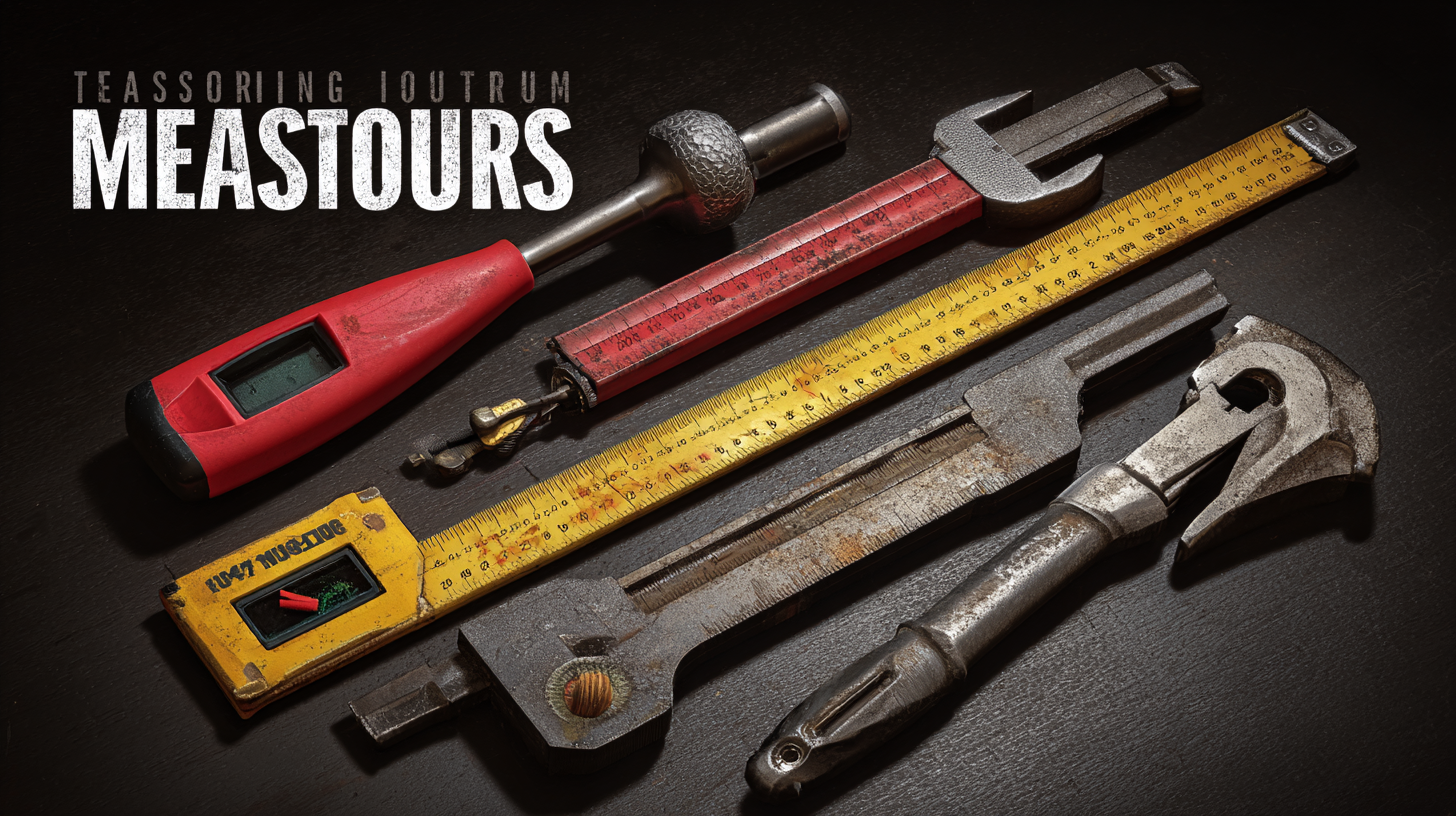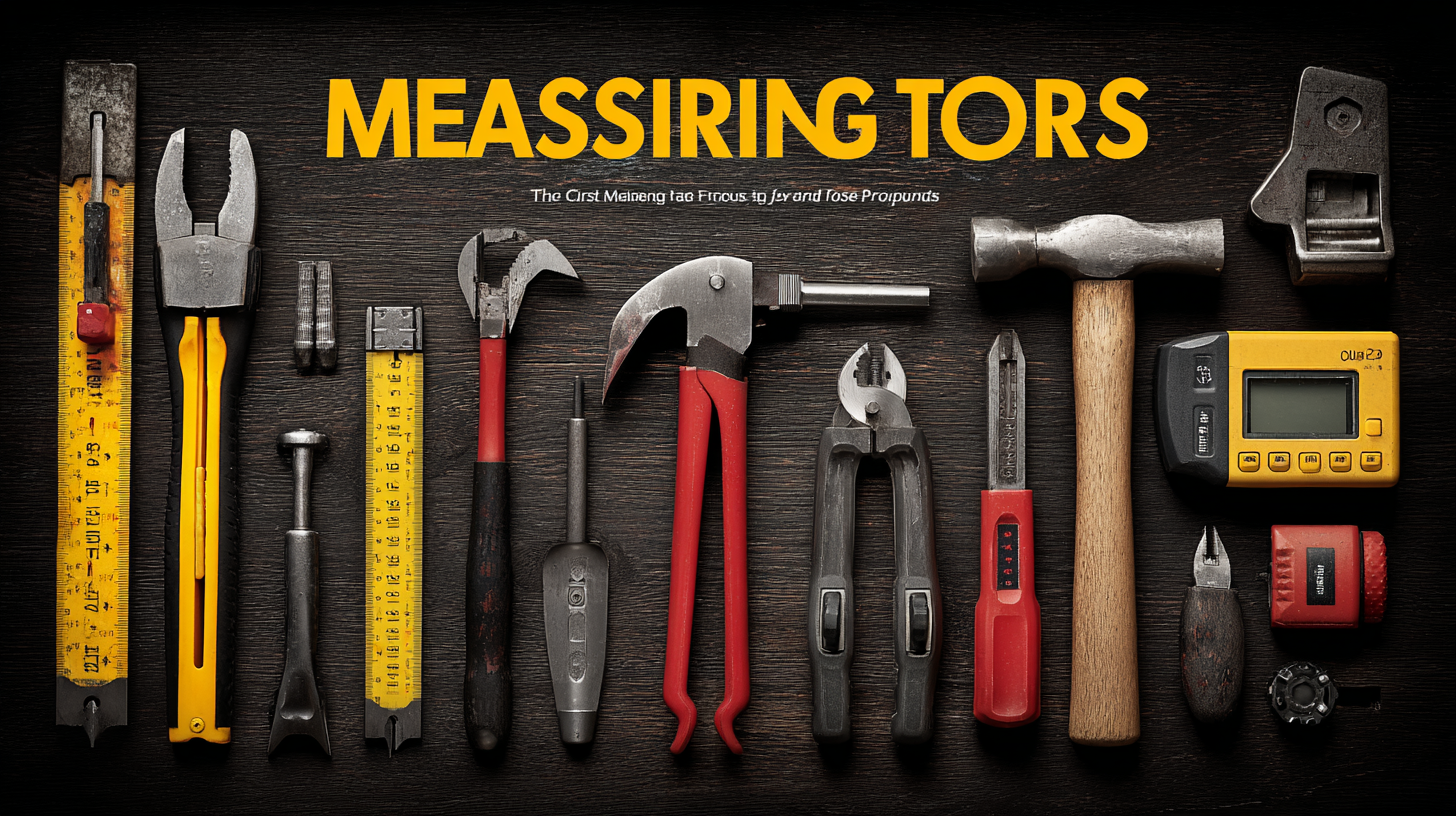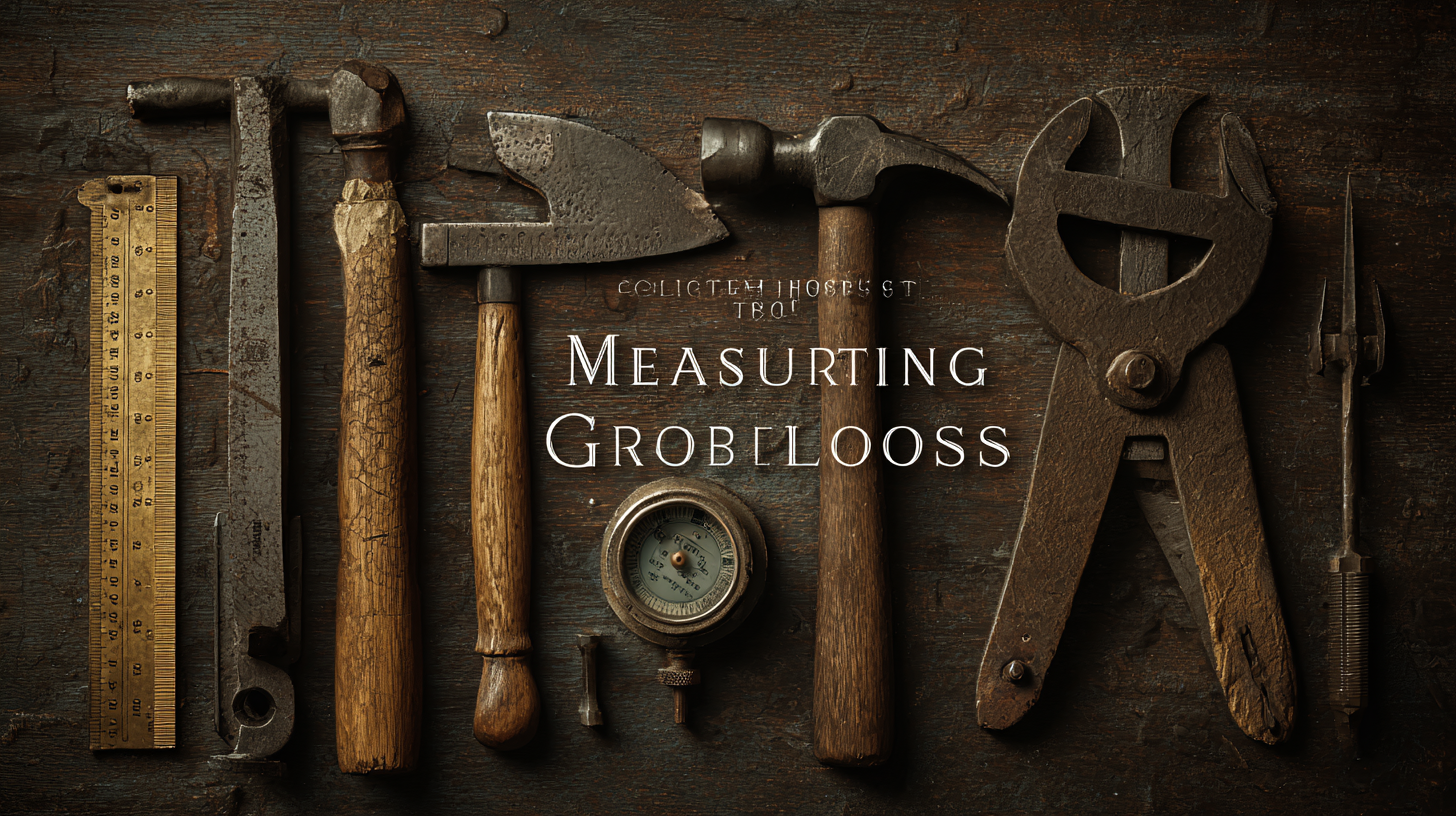How to Choose the Best Measuring Tools for Accurate Results in Your Projects
In today's rapidly evolving landscape, the importance of accurate measurements in project execution cannot be overstated. According to a recent report by the National Institute of Standards and Technology, nearly 70% of project failures can be traced back to inadequate measurement tools and techniques. As industries increasingly rely on precision for success, choosing the right Measuring Tools becomes paramount. Whether you are in construction, manufacturing, or any engineering field, the tools you select can greatly influence the quality of your outcomes.

As we delve into the future of Measuring Tools, it is crucial to understand how advancements in technology are shaping their development, ensuring not just accuracy but also efficiency in achieving project goals. By equipping yourself with the best measuring instruments, you position your projects for success and sustainability in a competitive market.
Understanding the Importance of Precision in Measuring Tools for Project Success
 Precision is a crucial element in any successful project, and the right measuring tools play a vital role in ensuring accuracy. When measurements are off, even slightly, it can lead to significant setbacks, wasted resources, and compromised results. Therefore, understanding the specific needs of your project and selecting the appropriate tools is essential. High-quality measuring instruments not only enhance the reliability of your data but also contribute to smoother project execution.
Precision is a crucial element in any successful project, and the right measuring tools play a vital role in ensuring accuracy. When measurements are off, even slightly, it can lead to significant setbacks, wasted resources, and compromised results. Therefore, understanding the specific needs of your project and selecting the appropriate tools is essential. High-quality measuring instruments not only enhance the reliability of your data but also contribute to smoother project execution.
Tips for choosing measuring tools include first assessing the scope of your project. Are you dealing with large-scale construction, or is it a small DIY craft? This determination will guide you toward various tools that can deliver the precision required for accurate results. Secondly, consider the environment in which you will be working. Certain measuring tools are more suited for specific conditions, such as humidity or temperature fluctuations. Choosing tools designed for your working environment can further improve measurement accuracy.
Another essential tip is to prioritize ease of use and technology integration. Tools that offer digital readouts and connectivity features can provide real-time data and greater accuracy. Familiarize yourself with the calibration process of your measuring instruments, as even the best tools can yield inaccurate results if not properly maintained. Investing in precision tools and understanding their significance can lead to project success and a more efficient workflow.
Key Features to Look for in Quality Measuring Tools for Accurate Results
When selecting measuring tools for your projects, it's crucial to focus on key features that ensure accuracy and reliability. Firstly, look for tools with a clear and easy-to-read display. Digital measuring tools often provide precise measurements and eliminate the guesswork associated with analog options. A backlit display can further enhance visibility in dimly lit areas, making your work easier and more efficient.
Another important feature to consider is the tool's calibration. Ensuring your measuring instrument is calibrated correctly enhances its ability to provide accurate results. Regularly check the calibration and re-calibrate as necessary; some tools come with built-in calibration features, which can save time and effort.
Lastly, choose tools made from high-quality materials that are durable and resistant to wear and tear. Stainless steel or reinforced plastic options are often ideal, as they can withstand various working conditions while maintaining their precision. Always prioritize quality over cost to avoid frequent replacements and inaccuracies in your projects.
Measuring Tools Accuracy Comparison
Industry Standards and Certifications for Reliable Measuring Instruments
When selecting measuring tools for your projects, adhering to industry standards and certifications is paramount to ensuring accuracy and reliability. Instruments that meet established standards, such as ISO or ASTM, offer the assurance that they have been rigorously tested and validated for performance. This compliance not only enhances the quality of your work but also helps in maintaining consistency across different projects.
**Tip:** Always check the manufacturer’s documentation for certifications and ensure that the tools you consider have endorsements from reputable organizations. This will give you confidence in their accuracy and durability.
Furthermore, understanding the specific requirements of your industry can guide your selections. Different sectors may have tailored standards that dictate the type of tools that best suit their needs. For instance, if you're in the construction industry, look for instruments that comply with relevant safety and precision standards.
**Tip:** Stay updated on new certifications and advancements in measurement technology, as this can affect the reliability of your tools. Regular training or workshops can provide insights into the latest industry best practices, enhancing your skill in selecting the most suitable measuring instruments for your projects.
How to Choose the Best Measuring Tools for Accurate Results in Your Projects
| Measuring Tool | Industry Standard | Accuracy Level | Certification |
|---|---|---|---|
| Digital Caliper | ISO 9001 | ±0.01 mm | CE Certified |
| Laser Distance Meter | ASTM E2877 | ±1.5 mm | FCC Certified |
| Multimeter | IEC 61010 | ±0.5% | UL Listed |
| Digital Thermometer | EN 13485 | ±0.1 °C | ISO 17025 |
| Barometer | ISO 7037 | ±1 hPa | ATEX Certified |
Comparing Manual vs. Digital Measuring Tools: Pros and Cons
When choosing measuring tools for your projects, it's essential to weigh the pros and cons of manual versus digital options.
Manual measuring tools, such as tape measures and calipers, offer simplicity and ease of use. They do not require batteries or electronic components, making them reliable in any environment. Additionally, many professionals appreciate the tactile feedback and control that manual tools provide, allowing for precise measurements in skilled hands. However, the potential for human error exists, particularly when accuracy is paramount.
On the other hand, digital measuring tools, including laser distance meters and digital calipers, have gained popularity for their enhanced accuracy and ease of reading. They often feature advanced technology that helps minimize errors, providing precise results with the push of a button. Digital tools can also store measurements and provide quick conversions, which is particularly beneficial for complex projects. However, they may require regular battery replacements and can be more expensive compared to their manual counterparts. Ultimately, the choice between manual and digital measuring tools comes down to the specific needs of your project and your personal preference for handling measurements.
Tips for Maintaining and Calibrating Measuring Tools to Ensure Accuracy
When it comes to achieving precision in your projects, maintaining and calibrating your measuring tools is crucial. Proper maintenance not only extends the lifespan of your tools but also ensures that the measurements you take are consistent and reliable. One essential tip is to clean your tools after each use. Dust and debris can affect their performance, leading to inaccurate results. Use a soft cloth and gentle cleaning solutions to avoid damaging sensitive components.

Regular calibration is another key element in ensuring accuracy. Establish a routine for calibrating your measuring tools according to the manufacturer’s recommendations or at least once a year. During calibration, compare your tool's measurements against a standard reference. If discrepancies are found, make the necessary adjustments to maintain accuracy. Additionally, storing your measuring tools in a controlled environment, away from extreme temperatures and humidity, can prevent wear and tear, ensuring they remain in optimal working condition.
By implementing these maintenance and calibration tips, you can significantly enhance the reliability of your measurements.
